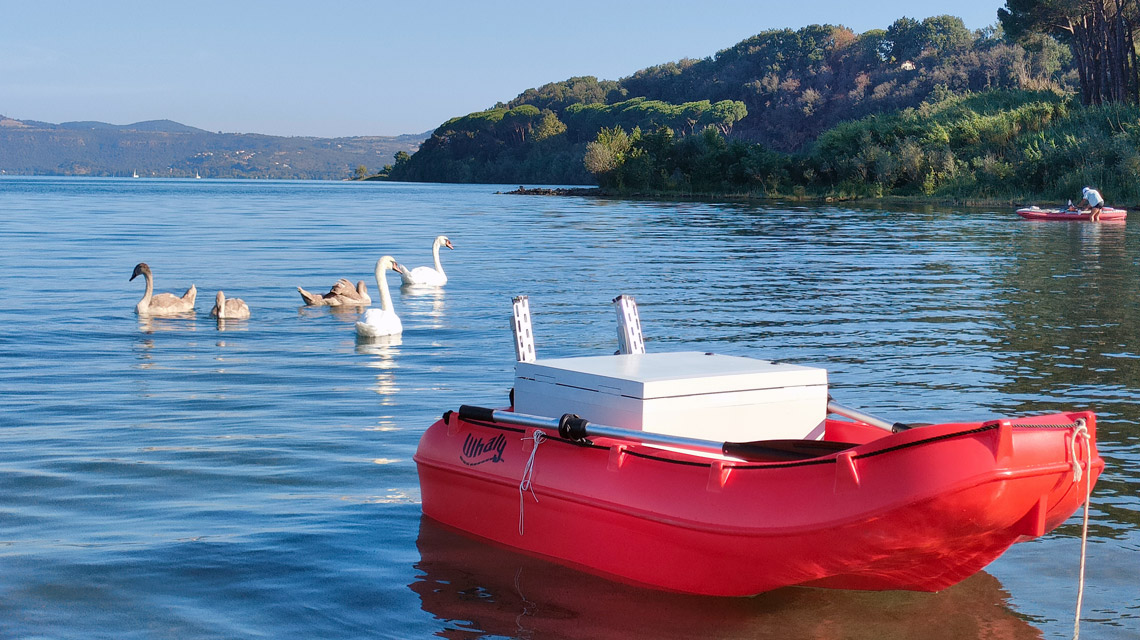Italian National Agency for New Technologies, Energy and Sustainable Economic Development

Innovation: from ENEA a robot-boat for advanced seabed research
An autonomous electric robot-boat equipped with tools to conduct non-invasive investigations - including archaeological ones - on lake and seabeds, is being developed at the ENEA Robotics and Artificial Intelligence Laboratory as part of the LAHKE project[1], with the aim of transferring advanced technologies to archaeological research in inland and marine waters.
“The surface marine drone, also called USV[2], has been created from a common commercial boat, to which it were added two different versions of engines in order to improve driveability and control precision,” explained project manager Ramiro dell'Erba, researcher at the ENEA Robotics and Artificial Intelligence Laboratory. “The final result is a reliable and efficient means, that allows you to explore the seabed to find underwater archaeological finds safely, as it is equipped with safety remote control and an automatic obstacle detection system. It is also a sustainable as it is electrically powered, at a cost of less than five thousand euro", said dell'Erba.
The USV, which can also to perform environmental research and monitoring, consists of a double-layer fiberglass hull, weighing around 40 kilos and approximately 2.5 meters long, equipped with high sides to effectively protect the instruments from water.
An automatic pilot[3] installed on a control platform[4] and an on-board computer[5] for tasks such as real-time video and obstacle detection are positioned inside, while the automatic procedure for avoiding obstacles and mission replanning is being developed.
“As part of this project, we have developed specialized hardware and a dedicated open-source software to push the vehicle's performance to the specific uses for which it is called upon to operate,” explained dell'Erba. “The data acquired from different types of acoustic and non-acoustic sensors - he said - will enable us to carry out, for instance, a multimedia reconstruction of the archaeological site of La Marmotta buried in Lake Bracciano”.
The advantages of the robotic vehicle, in addition to precision and repeatability of measurements and significantly reduced cost compared to similar systems on the market – as it is equipped with low-cost and easily available non-specific sensors - are the speed at which it can explore and map a site, the practicality of use and the customization of the vehicle according to the multiple tasks it can be used for.
